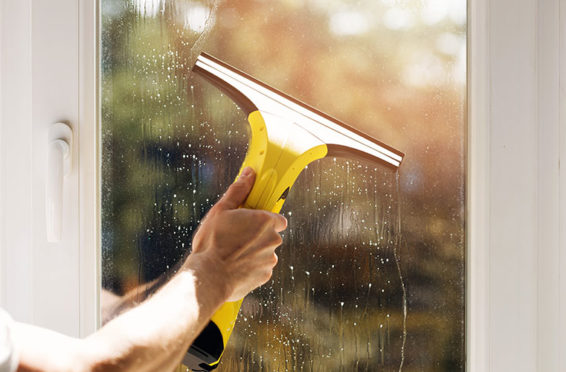Introduction:
The allure of gleaming, streak-free mirrors extends beyond mere aesthetics. Clean mirrors contribute to a healthier living environment by eliminating dust, grime, and unwanted contaminants. While many individuals reach for commercial products like Windex, this guide explores a natural and effective alternative for mirror maintenance. By utilizing simple household items, we can achieve a pristine shine without the use of harsh chemicals. In this detailed guide, we’ll take a closer look at each step, delve into the science behind the homemade cleaning solution, and address common questions to ensure your mirrors dazzle without compromise.
I. Gathering Supplies
Embarking on the Windex-free cleaning journey begins with assembling a few essential supplies. A microfiber cloth takes center stage due to its ability to trap and lift dirt without leaving lint or scratches. Distilled white vinegar, with its mild acidity, and lukewarm water complete the trio of ingredients for a powerful yet gentle cleaning solution.
II. Dusting and Removing Loose Debris
Before applying the cleaning solution, it’s crucial to prepare the mirror surface by gently dusting with a dry microfiber cloth. For intricate areas like corners and crevices, a soft brush or feather duster proves effective in eliminating loose debris. This initial step ensures that the cleaning solution can work its magic without interference from lingering dust or particles.
III. Homemade Mirror Cleaning Solution
The heart of this Windex-free cleaning method lies in the homemade cleaning solution. Mixing distilled white vinegar and lukewarm water in a spray bottle creates a dynamic duo that cuts through grime, leaving mirrors sparkling. The recommended ratio of one part vinegar to two parts water strikes the perfect balance between cleaning power and gentleness on mirror surfaces. For stubborn spots, a small amount of liquid dish soap can be added to the solution, enhancing its stain-fighting capabilities.
IV. Application of Cleaning Solution
With the cleaning elixir prepared, it’s time to evenly distribute it across the mirror’s surface. Working from top to bottom minimizes the risk of streaks, ensuring a flawless finish. The natural acidity of vinegar helps dissolve stubborn residues, while the microfiber cloth ensures an even application and efficient removal of dirt.
V. Wiping and Drying
The wiping and drying stage is critical to achieving a streak-free shine. Using a clean microfiber cloth, adopt circular or horizontal motions to wipe the mirror thoroughly. This method guarantees that every inch of the mirror surface receives attention. While air drying is an option, gently patting the mirror dry with a separate microfiber cloth ensures a swift and spotless outcome.
VI. Addressing Stubborn Streaks or Spots
Despite the effectiveness of the homemade solution, some mirrors may present stubborn streaks or spots. In such cases, reapplying the cleaning solution to specific areas and using a different section of the microfiber cloth for wiping can resolve these issues. It’s essential to ensure no residue remains, as this contributes to a pristine, reflective finish.
VII. Final Inspection
Stepping back to admire your handiwork is a gratifying moment. Conduct a thorough inspection for any lingering streaks, spots, or smudges. Taking the time to make any necessary touch-ups guarantees a mirror that not only reflects light but also radiates cleanliness.
VIII. Tips for Maintaining Clean Mirrors
To extend the lifespan of your mirror’s sparkle, consider adopting the following maintenance tips:
- Establish a regular cleaning schedule, with a comprehensive cleaning every two weeks.
- Avoid using abrasive materials, as these can scratch and damage the mirror surface.
- Address spots and smudges promptly to prevent them from becoming stubborn stains.
FAQs:
Q1: Can I use any type of vinegar for the cleaning solution?
A1: While white vinegar is preferred for its clarity and mild scent, apple cider vinegar can be used as an alternative.
Q2: How often should I clean my mirrors?
A2: Aim for a thorough cleaning every two weeks. Adjust the frequency based on the mirror’s exposure to factors like dust and moisture.
Q3: Is it necessary to use a microfiber cloth?
A3: Yes, microfiber cloths are recommended for their ability to trap and lift dirt without scratching the mirror surface.
Conclusion:
In conclusion, achieving sparkling mirrors without the use of Windex is both achievable and environmentally friendly. By embracing the steps outlined in this comprehensive guide and incorporating them into a regular cleaning routine, you can revel in the reflective brilliance of your mirrors without compromise. Making the switch to natural cleaning methods not only enhances the longevity of your mirrors but also contributes to a healthier home environment. Say goodbye to harsh chemicals and hello to a streak-free, eco-conscious shine.

A group of home improvement enthusiasts and bathroom design experts, combines in-depth knowledge and a shared passion to deliver engaging, informative content that guides readers through the world of bathroom innovation and style.

Leave a Reply